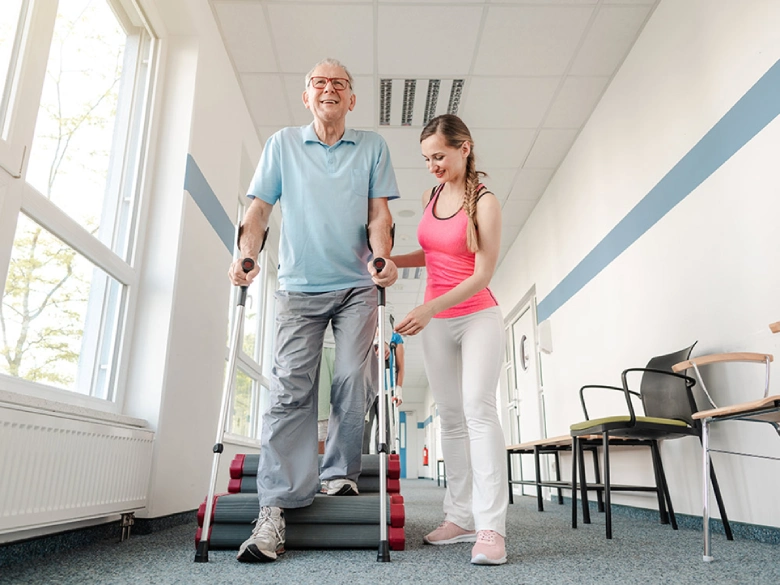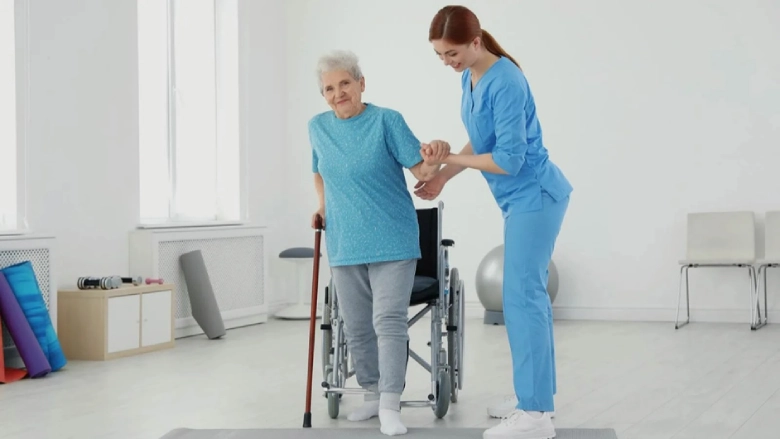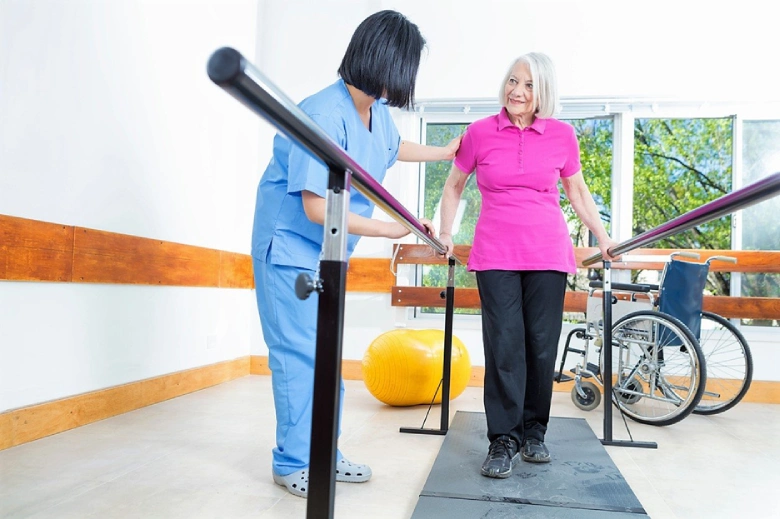Walking rehabilitation is crucial for patients healing from surgery, injuries, or long-term illnesses like stroke or arthritis. Targeted workouts and therapies are part of this approach, which aims to improve overall quality of life, and strengthen and regain mobility. This article covers the principles of walking rehabilitation, the phases involved, important exercises, necessary equipment, typical obstacles, and the critical function of the rehabilitation team.
Understanding Walking Rehabilitation
Rehabilitation for walking aims to help patients regain their freedom and movement, strengthen their muscles, improve their balance and coordination, and ultimately enhance their quality of life. The process begins with a comprehensive assessment that includes a gait study, physical examination, and review of the patient’s medical history. This assessment is necessary to create a personalized rehabilitation plan that takes into account the particular needs and traits of the patient.
Stages of Walking Rehabilitation
There are three stages of rehabilitation including:
1. Early Stage Rehabilitation
The goals of the early phase are to control discomfort, minimize edema, and avoid complications. The milder workouts in the beginning are designed to keep the body flexible and avoid stiffness. During this phase, range-of-motion exercises like knee bends and ankle pumps are added. These exercises assist in maintaining the flexibility of the joints and prime the muscles for later, more strenuous activity.
2. Mid Stage Rehabilitation
The rehabilitation plan has increasingly difficult weight-bearing exercises as the patient becomes better. Training for endurance and muscle strength becomes the main focus. Exercises like leg raises, heel raises, and step-ups, which increase muscle strength and enhance the body’s capacity to support weight, may be included in this phase.
3. Advanced Stage
High-level balance and coordination exercises are a part of the advanced-stage rehabilitation program. The purpose of these workouts is to improve stability and reduce the risk of falls. Additionally, to assist patients in getting back into their regular routines, functional training which consists of tasks that resemble everyday tasks, is offered. This phase readies people for particular endeavors, such as going back to sports or engaging in other physical activities.
Walking rehab improves mobility and strength through three stages: early, mid, and advanced. The early stage manages discomfort and maintains flexibility, the mid stage builds endurance and strength, and the advanced stage focuses on balance and coordination.
Key Walking Rehabilitation Exercises
Walking rehabilitation exercises include:
· Range-of-Motion Exercises
Exercises that increase the range of motion are essential for preserving flexibility and avoiding stiffness. Ankle pumps, knee bends, and hip abductions are a few examples. These exercises guarantee that the muscles are ready for more demanding tasks and that the joints stay flexible.
· Strengthening Exercises
Building the muscles that enable walking requires strength training. Step-ups, heel lifts, and leg raises are common exercises. By strengthening the muscles involved in walking, these workouts aim to improve stability and support.

· Balance and Coordination Exercises
For safe mobility and fall prevention, balance and coordination must be improved. Stability-boosting exercises include tandem walking, standing on one leg, and using balance boards. By teaching the body to stay balanced s, these activities lower the chance of falls.
· Gait Training
The main goal of gait training is to practice proper gait patterns. Utilizing assistive technology such as treadmills, gait belts, and parallel bars is a common part of this training. Encouraging the patient to walk more efficiently and safely is the aim of improving their gait.
Tools and Equipment in Walking Rehabilitation
In walking therapy, assistive aids including crutches, walkers, and canes are frequently utilized. As patients regain strength and mobility, these items help them move safely by offering support and stability. Effective use of these devices at the right times is essential for a successful rehabilitation process. Technological developments have brought about several tools that greatly improve walking recovery. Technological advances such as robotic exoskeletons and body-weight-supported treadmills are beneficial to the rehabilitation process. By using these gadgets, patients can improve their strength and gait by practicing walking in a controlled setting.

Challenges and Solutions in Walking Rehabilitation
Pain management, psychological barriers to overcome, and patient motivation maintenance are common issues associated with rehabilitation. These difficulties may obstruct development and have an impact on the recovery process as a whole. It is crucial to establish reasonable goals, use family support, and routinely monitor progress to overcome these obstacles. Patients can maintain their commitment to their recovery process by being continuously motivated and encouraged to participate actively. To overcome obstacles, pain management techniques, and psychological support are also essential.
Walking rehab exercises include range-of-motion, strength, balance, and gait exercises. Tools like crutches aid mobility, while tech advancements enhance outcomes. Challenges like pain and motivation require tailored solutions.
The Role of the Rehabilitation Team
To administer walking rehabilitation, the role of the rehabilitation team is important:
· Multidisciplinary Approach
A multidisciplinary team comprising physicians, nurses, occupational therapists, and physical therapists is necessary for a successful walking rehabilitation program. Each team member is essential to give the patient comprehensive treatment and guarantee the greatest results. To address every facet of the patient’s recovery, coordinated treatment works well.
· Patient and Family Education
One of the most important aspects of the rehabilitation process is educating patients and their families. Patients and their families can be empowered by learning at-home workouts, safety precautions, and information about the rehabilitation process. Encouraging proactive involvement and comprehending the process of rehabilitation contribute to the achievement of sustained success.

Conclusion
Walking rehabilitation is a vital process that significantly impacts the recovery and quality of life for individuals with mobility impairments. By understanding the stages of rehabilitation, incorporating key exercises, utilizing appropriate tools, and addressing challenges, patients can achieve better outcomes. The role of a dedicated rehabilitation team and continuous patient and family education are essential for a successful rehabilitation journey. As research and technology continue to advance, walking rehabilitation methods will evolve, offering new opportunities for improved recovery and enhanced quality of life.
You can contact us through the website to learn about the services of Radial Clinic and book an appointment for west vancouver chiropractors , physiotherapy or RMT.
speech therapy exercises for adults after stroke
Walking Rehabilitation Excercise in West Vancouver Clinic
Our walking rehabilitation activities West Vancouver program in the Clinic are intended to assist patients in improving their walking capacity following surgery or an injury. Our skilled therapists use a thorough approach to design customized plans that are suited to the particular needs and objectives of each patient. To guarantee a comprehensive healing process, the program combines some approaches, such as gait analysis, strength training, and balancing exercises. Our cutting-edge facility offers a caring atmosphere where patients can regain their self-confidence and reach their full potential in terms of physical function. Whether a patient is recovering from a neurological disease, joint replacement, or sports injury, our committed team will help them every step of the way to living an active and fulfilling life. Call us to set an appointment.